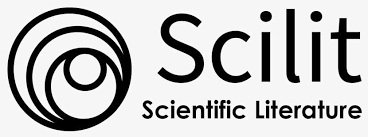Klasifikasi Buah dan Sayuran Segar atau Busuk Menggunakan Convolutional Neural Network
DOI:
https://doi.org/10.14421/jiska.2024.9.1.27-38Keywords:
Convolutional Neural Network, Tensorflow, Classification, Fruits, VegetablesAbstract
Fresh fruits and vegetables contain many nutrients, such as minerals, vitamins, antioxidants, and beneficial fiber, superior to those found in rotten or almost rotten produce. On the other hand, fruits and vegetables that are nearly spoiled or already rotten have significantly lost their nutritional value. Rotten produce also harbors bacteria and fungi that can lead to infections and food poisoning when consumed. Convolutional Neural Network (CNN) offers a programmable solution for classifying fresh and rotten fruits and vegetables. Image processing using the TensorFlow library is employed in this classification process. During testing on the training data, the CNN achieved an accuracy of 90.42%. In comparison, the validation accuracy reached 94.21% when using the SGD optimizer, 20 epochs, a batch size 16, and a learning rate of 0.01. For the testing data, the accuracy obtained was 80.83%.
References
Alfarizi, M. R. S., Al-farish, M. Z., Taufiqurrahman, M., Ardiansah, G., & Elgar, M. (2023). Penggunaan Python Sebagai Bahasa Pemrograman untuk Machine Learning dan Deep Learning. KARIMAH TAUHID, 2(1), 1–6. https://doi.org/10.30997/KARIMAHTAUHID.V2I1.7518
Apendi, S., Setianingsih, C., & Paryasto, M. W. (2023). Deteksi Bahasa Isyarat Sistem Isyarat Bahasa Indonesia Menggunakan Metode Single Shot Multibox Detector. EProceedings of Engineering, 10(1), 249–255. https://openlibrarypublications.telkomuniversity.ac.id/index.php/engineering/article/view/19322
Ayumi, V. (Vina), & Nurhaida, I. (Ida). (2021). Klasifikasi Chest X-Ray Images Berdasarkan Kriteria Gejala Covid-19 Menggunakan Convolutional Neural Network. Journal Scientific and Applied Informatics, 4(2), 147–153. https://doi.org/10.36085/JSAI.V4I2.1513
Baloch, A., & Khalique, A. (2022). Vegetables & Fruits fresh and Stale. Kaggle. https://www.kaggle.com/datasets/alibaloch/vegetables-fruits-fresh-and-stale
Gregori, D., French, M., Gallipoli, S., Lorenzoni, G., & Ghidina, M. (2019). Global, Regional, and National Levels of Fruit and Vegetable Consumption from the ROUND (WoRld Map of COnsUmption of Fruit and Vegetables and Nutrient Deficits) Project (P18-067-19). Current Developments in Nutrition, 3(Suppl 1), nzz039.P18-067-19. https://doi.org/10.1093/CDN/NZZ039.P18-067-19
Hawari, F. H., Fadillah, F., Alviandi, M. R., & Arifin, T. (2022). Klasifikasi Penyakit Tanaman Padi Menggunakan Algoritma CNN (Convolutional Neural Network). Jurnal Responsif : Riset Sains Dan Informatika, 4(2), 184–189. https://doi.org/10.51977/JTI.V4I2.856
Iswantoro, D., & UN, D. H. (2022). Klasifikasi Penyakit Tanaman Jagung Menggunakan Metode Convolutional Neural Network (CNN). Jurnal Ilmiah Universitas Batanghari Jambi, 22(2), 900. https://doi.org/10.33087/jiubj.v22i2.2065
Jafaruddin, N. (2023). Pola Hidup Sehat dengan Konsumsi Buah dan Sayur. Abdimas Galuh, 5(1), 569–577. https://doi.org/10.25157/AG.V5I1.9919
Magalhães, B., Gaspar, P. D., Corceiro, A., João, L., & Bumba, C. (2022). Fuzzy Logic Decision Support System to Predict Peaches Marketable Period at Highest Quality. Climate 2022, Vol. 10, Page 29, 10(3), 29. https://doi.org/10.3390/CLI10030029
Mahaputri, C., Kristian, Y., & Setyati, E. (2022). Pengenalan Makanan Tradisional Indonesia Beserta Bahan-bahannya dengan Memanfaatkan DCNN Transfer Learning. INSYST: Journal of Intelligent System and Computation, 4(2), 61–68. https://doi.org/10.52985/INSYST.V4I2.252
Mulyanto, A., Susanti, E., Rossi, F., Wajiran, W., & Borman, R. I. (2021). Penerapan Convolutional Neural Network (CNN) pada Pengenalan Aksara Lampung Berbasis Optical Character Recognition (OCR). JEPIN (Jurnal Edukasi Dan Penelitian Informatika), 7(1), 52–57. https://doi.org/10.26418/JP.V7I1.44133
Qotrunnada, Mufida, F., & Utomo, P. H. (2022). Metode Convolutional Neural Network untuk Klasifikasi Wajah Bermasker. PRISMA, Prosiding Seminar Nasional Matematika, 5, 799–807. https://journal.unnes.ac.id/sju/index.php/prisma/article/view/54602
Rarastiti, C. N. (2022). Hubungan Pengetahuan Gizi Seimbang dengan Konsumsi Buah dan Sayur pada Remaja. Jurnal Penelitian Inovatif, 2(2), 281–288. https://doi.org/10.54082/JUPIN.80
Sya’ban, D. R., Hamzah, A., & Susanti, E. (2022). Klasifikasi Buah Segar dan Busuk Menggunakan Algoritma Convolutional Neural Network Dengan TFLite Sebagai Media Penerapan Model Machine Learning. PROSIDING SNAST, F7-16. https://doi.org/10.34151/PROSIDINGSNAST.V8I1.4180
Wulandari, I., Yasin, H., & Widiharih, T. (2020). Klasifikasi Citra Digital Bumbu dan Rempah dengan Algoritma Convolutional Neural Network (CNN). Jurnal Gaussian, 9(3), 273–282. https://doi.org/10.14710/J.GAUSS.9.3.273-282
Downloads
Published
How to Cite
Issue
Section
License
Copyright (c) 2024 Eka Aenun Nisa Munfaati, Arita Witanti

This work is licensed under a Creative Commons Attribution-NonCommercial 4.0 International License.
Authors who publish with this journal agree to the following terms as stated in http://creativecommons.org/licenses/by-nc/4.0
a. Authors retain copyright and grant the journal right of first publication with the work simultaneously licensed under a Creative Commons Attribution License that allows others to share the work with an acknowledgement of the work's authorship and initial publication in this journal.
b. Authors are able to enter into separate, additional contractual arrangements for the non-exclusive distribution of the journal's published version of the work (e.g., post it to an institutional repository or publish it in a book), with an acknowledgement of its initial publication in this journal.
c. Authors are permitted and encouraged to post their work online (e.g., in institutional repositories or on their website) prior to and during the submission process, as it can lead to productive exchanges, as well as earlier and greater citation of published work.










